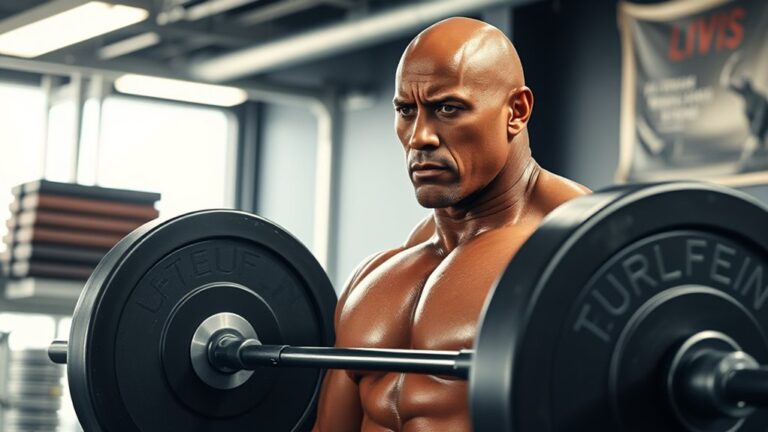The Best Workouts From Modern-Day Bodybuilding Champions

To achieve the best results from modern-day bodybuilding champions, you should prioritize functional training and compound movements for overall strength and mobility. Incorporate high-intensity interval training (HIIT) to boost your endurance and optimize muscle recovery. Don’t forget your nutrition; a balanced macronutrient intake is essential for performance. Embracing regular workout variation helps prevent plateaus and stimulates muscle growth. Stay tuned to discover effective recovery techniques and the mind-muscle connection that can elevate your training!
The Rise of Functional Training in Bodybuilding
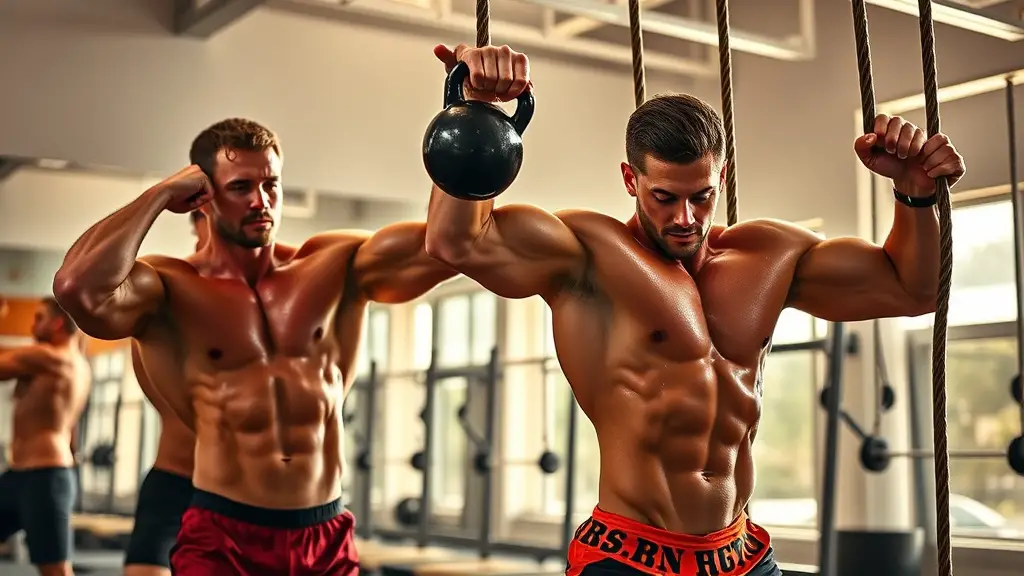
As the landscape of bodybuilding continues to evolve, functional training has emerged as a key component that champions are increasingly embracing. This approach prioritizes functional fitness, focusing on exercises that enhance strength mobility and mimic real-life movements. By integrating functional training into their routines, you can improve not just muscle size, but overall athletic performance and daily life activities.
Functional exercises often involve compound movements, like squats and deadlifts, which engage multiple muscle groups simultaneously. This helps develop a balanced physique while reducing the risk of injury. You’ll find that champions are now incorporating tools like kettlebells, resistance bands, and even bodyweight exercises to enhance their training.
High-Intensity Interval Training (HIIT) for Muscle Gains
Integrating high-intensity interval training (HIIT) into your routine can considerably boost muscle gains while enhancing your overall conditioning. HIIT techniques involve short bursts of intense activity followed by brief rest periods, allowing you to push your limits without sacrificing muscle endurance. By incorporating exercises like sprinting or kettlebell swings, you can stimulate muscle fibers in a unique way that traditional workouts may not.
Not only does HIIT improve your cardiovascular health, but it also aids in muscle recovery. The high intensity promotes blood flow, delivering essential nutrients to your muscles post-workout, which accelerates recovery and growth. Additionally, the metabolic boost from HIIT continues to burn calories long after your session ends, helping you maintain a lean physique. Furthermore, integrating skipping rope into your HIIT routine can enhance coordination and balance, providing an added benefit to your workouts.
The Power of Compound Movements
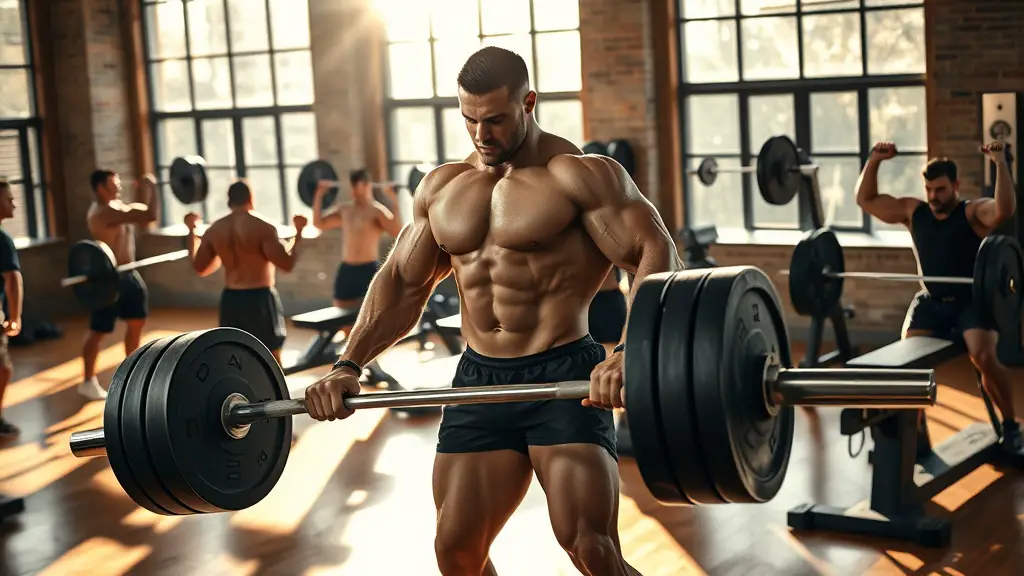
While many workouts focus on isolation exercises, the true power of compound movements lies in their ability to engage multiple muscle groups simultaneously, maximizing efficiency and effectiveness. When you incorporate compound exercises like squats, deadlifts, and bench presses into your strength training routine, you’re not just targeting one area; you’re building strength across your entire body.
These movements mimic everyday activities, enhancing functional strength and improving your overall performance. You’ll find that compound exercises stimulate more muscle fibers, leading to greater muscle growth and increased calorie burn, which is essential for those looking to gain muscle mass.
Additionally, they can help you develop better coordination and balance, making your workouts more dynamic. By prioritizing compound movements, you’ll create a solid foundation for your strength training, enabling you to lift heavier and achieve your fitness goals faster. Embrace the power of these exercises, and watch your progress soar.
Nutrition Strategies for Optimal Performance
Achieving peak performance in your workouts often hinges on what you fuel your body with. Nutrition isn’t just about eating; it’s about strategically planning your meals to maximize gains. Focus on meal timing—consume a mix of carbohydrates and protein both before and after your workouts. This guarantees your muscles have the energy they need during exercise and the nutrients for recovery afterward.
Maintaining a proper macronutrient balance is vital, too. Aim for a ratio that supports your goals, like 40% carbs, 30% protein, and 30% fats for muscle growth. These macronutrients work synergistically to provide energy, repair tissues, and enhance overall performance. Don’t underestimate hydration either; it plays a significant role in nutrient absorption and energy levels.
Recovery Techniques Used by Top Athletes
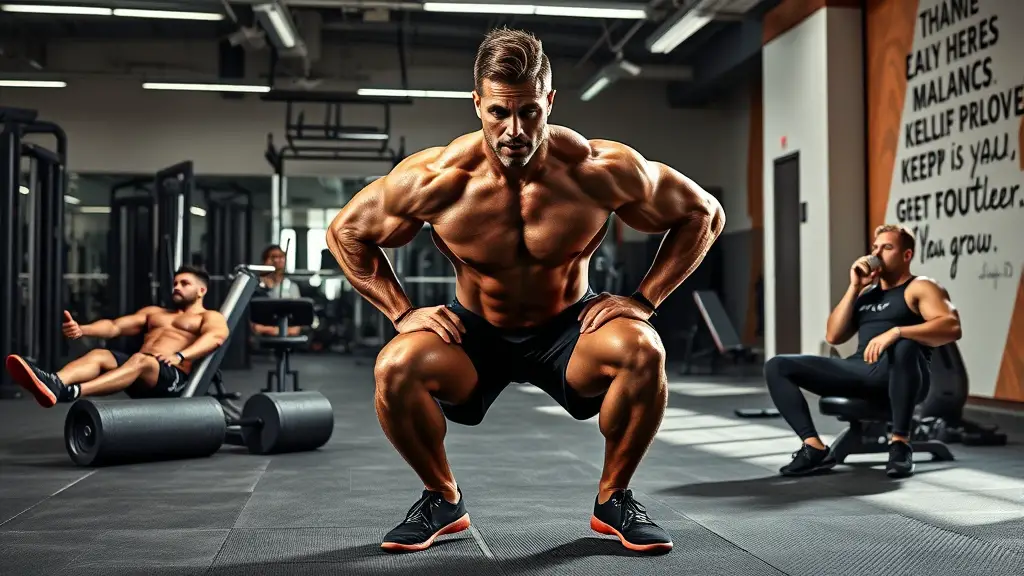
When you push your body to its limits during intense workouts, the importance of recovery can’t be overstated. Top athletes utilize a variety of techniques to enhance recovery and optimize performance. Active recovery, such as light jogging or cycling, helps maintain blood flow and reduce soreness. Foam rolling is another essential tool, easing muscle tension and improving flexibility.
Cold therapy, like ice baths, can reduce inflammation and speed up recovery, while sleep optimization guarantees your body repairs itself effectively. Don’t underestimate the role of hydration strategies; staying well-hydrated aids in muscle function and recovery.
Incorporating massage benefits can alleviate tightness, and stretching techniques improve overall flexibility. Finally, practicing breathing exercises can enhance relaxation and reduce stress, promoting a faster recovery. Additionally, understanding the impact of muscle loss during inactivity can guide athletes in planning effective rest periods. By integrating these techniques into your routine, you’ll support your body in bouncing back stronger than ever.
Embracing the Mind-Muscle Connection
To maximize your workouts, you need to focus on the mind-muscle connection. This powerful technique can greatly enhance your performance and muscle growth by ensuring that you’re truly engaging the targeted muscles. Let’s explore how refining your focus and employing specific techniques can transform your training routine.
Importance of Focus
Focus is essential in bodybuilding, as it transforms a routine workout into a powerful, purposeful experience. When you harness effective focus techniques, you engage your mind and body in unison, enhancing your overall performance. Achieving mental clarity allows you to concentrate on each movement, ensuring you’re activating the right muscles during your lifts. This connection not only improves strength but also minimizes the risk of injury. By prioritizing focus, you’re more likely to recognize when your form falters or when you can push beyond your limits. Ultimately, cultivating this awareness is significant for progress, helping you reach your goals more efficiently. Remember, the mind-muscle connection is just as important as the physical effort you put in at the gym.
Techniques to Enhance Connection
While many gym-goers rely solely on physical exertion, embracing the mind-muscle connection can elevate your workouts to a whole new level. Techniques like muscle visualization and sensory engagement can dramatically enhance your focus during exercises. By mentally picturing the targeted muscle contracting and relaxing, you’ll optimize each rep.
Here’s a simple overview of these techniques:
| Technique | Description | Benefits |
|---|---|---|
| Muscle Visualization | Picture your muscles working | Improved focus |
| Sensory Engagement | Engage all senses during workouts | Enhanced workout quality |
| Mindfulness Practice | Stay present and aware of movements | Better form and control |
Incorporating these practices can help you connect deeper with your workouts, leading to a more fulfilling gym experience.
Benefits for Muscle Growth
When you harness the mind-muscle connection, you’re not just lifting weights; you’re actively engaging the muscles to maximize their potential for growth. This focused engagement can lead to significant muscle hypertrophy, as your brain sends precise signals to the targeted muscles, ensuring they’re working efficiently. By concentrating on each rep, you enhance the contraction and stretch of the muscle fibers, which contributes to greater strength gains over time. It’s not just about the weight on the bar; it’s about how you lift it. This awareness can elevate your workouts, resulting in impressive muscle development and improved performance. Embracing this connection transforms your training, making each exercise more effective and purposeful in your bodybuilding journey.
The Importance of Variation in Workouts
When you stick to the same workout routine, you risk hitting a plateau that stalls your progress. By incorporating variation, you not only enhance muscle adaptation but also reduce the likelihood of injuries. Keeping your workouts fresh and diverse is key to achieving your bodybuilding goals effectively.
Preventing Workout Plateaus
To keep your fitness journey progressing, embracing variation in your workouts is essential, as it helps prevent the dreaded plateau that many athletes experience. Incorporating workout variety not only keeps things fresh but also aligns with effective goal setting. Here are three strategies to help you avoid plateaus:
- Change Your Routine: Switch up exercises, rep ranges, or workout splits to challenge your muscles differently.
- Vary Intensity: Alternate between heavy lifting days and lighter, higher-rep sessions to stimulate growth and endurance.
- Incorporate New Techniques: Try methods like supersets, drop sets, or circuit training to keep your body guessing.
Enhancing Muscle Adaptation
While many gym-goers stick to familiar routines, embracing variation is essential for enhancing muscle adaptation. Your muscles adapt to the specific stresses you place on them, primarily by recruiting different muscle fibers. When you change your workouts—be it through varying exercises, increasing intensity, or altering training frequency—you challenge your muscles in new ways. This not only promotes growth but also prevents stagnation. Incorporating different rep ranges and rest periods can further stimulate muscle fibers that may not be engaged during your usual routine. By doing so, you encourage overall muscle development and strength gains. Remember, the key to continuous improvement lies in keeping your workouts dynamic and your muscles guessing. So, mix it up for best results!
Promoting Injury Prevention
Variation in workouts not only enhances muscle adaptation but also plays an essential role in promoting injury prevention. By incorporating diverse exercises and techniques, you can reduce the risk of overuse injuries and improve your overall performance. Here are three effective injury prevention strategies to take into account:
- Change Your Routine Regularly: Switching exercises keeps your muscles guessing and helps avoid repetitive strain.
- Incorporate Mobility Work: Adding stretching and flexibility exercises guarantees your joints stay healthy and functional.
- Focus on Safe Lifting Techniques: Prioritizing proper form and technique prevents injuries and enhances your strength gains.
Incorporating Cardiovascular Fitness Into Bodybuilding
Incorporating cardiovascular fitness into your bodybuilding routine is essential for peak performance and overall health, especially since it can enhance endurance and promote effective fat loss. Cardio integration is key; it helps you maintain a balanced approach to fitness, ensuring you’re not just building muscle but also improving your heart health.
When you engage in endurance training, you increase your stamina, allowing you to perform better during high-intensity workouts. This can lead to more productive lifting sessions and faster recovery. Aim for a mix of steady-state cardio and high-intensity interval training (HIIT) to maximize benefits.
Skipping rope can be included in your routine as it offers both aerobic and anaerobic benefits, enhancing overall fitness levels. Try scheduling cardio sessions post-lifting or on separate days to avoid fatigue affecting your strength training. Remember, the goal isn’t to sacrifice muscle for cardio; instead, it’s about creating a harmonious balance that supports your bodybuilding goals while elevating your overall fitness.
Mental Toughness and Its Role in Training Success
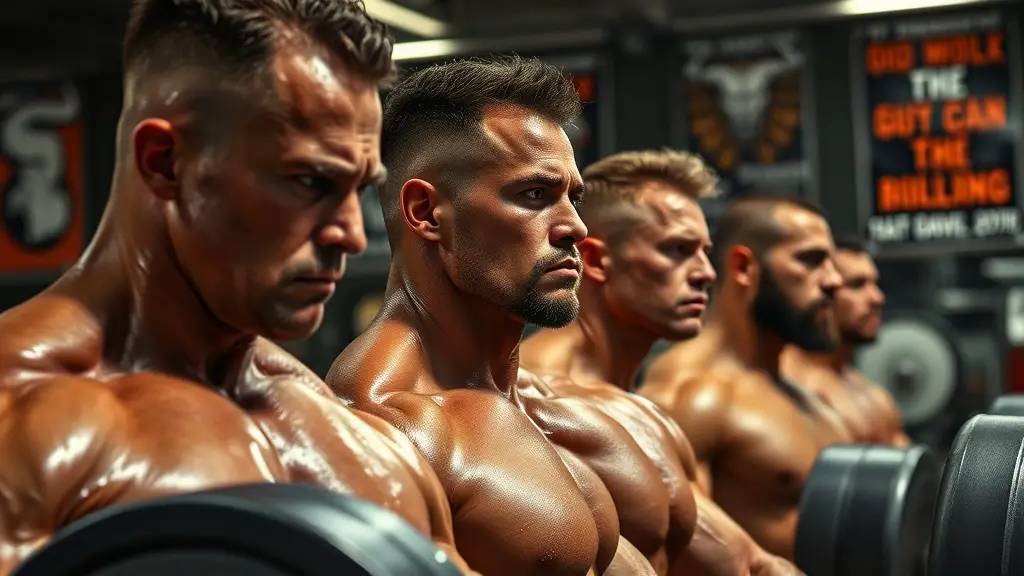
Building muscle and improving cardiovascular fitness are only part of the equation for training success; mental toughness plays an essential role in your overall performance. Developing mental resilience can help you push through tough workouts and stay committed to your goals. Here are three psychological strategies to enhance your mental toughness:
- Visualization: Picture yourself achieving your fitness goals. This mental imagery can boost your confidence and motivation.
- Positive Self-Talk: Replace negative thoughts with affirmations. Encouraging yourself during challenging moments can greatly improve your performance.
- Goal Setting: Break down your larger goals into smaller, achievable milestones. Celebrating these wins builds resilience and keeps you focused.
Frequently Asked Questions
How Do I Choose the Right Bodybuilding Champion to Follow?
Choosing the right bodybuilding champion to follow involves understanding their personal style and training philosophy. Look for someone whose approach resonates with you—whether that’s high-volume workouts, powerlifting, or a focus on aesthetics. Analyze their results and consistency, but also consider their mindset and motivation. Following someone who aligns with your goals can inspire you to push harder and stay committed to your own journey in bodybuilding. Don’t rush; take your time to find the perfect fit.
What Equipment Do I Need for Modern Bodybuilding Workouts?
Think of your gym as a treasure chest filled with tools. To get started with modern bodybuilding, you’ll want to invest in some essential equipment. Dumbbell variations are a must for versatility, allowing you to target different muscle groups effectively. Resistance bands also come in handy, providing variable resistance and enhancing your workouts. Together, these tools can help you sculpt your physique and make strides toward your bodybuilding goals. Don’t overlook the importance of proper form!
Can Beginners Adopt These Advanced Bodybuilding Techniques?
Absolutely, as a beginner, you can adopt advanced techniques by making beginner adaptations. Start with lighter weights and focus on mastering your form before progressing. Techniques like supersets or drop sets can be modified to suit your fitness level, ensuring you build strength without risking injury. Gradually incorporate these methods into your routine, allowing your body to adjust. It’s all about finding the right balance between challenge and safety as you advance.
How Often Should I Change My Workout Routine?
You’d think sticking to the same workout routine would yield amazing results forever, right? Ironically, that’s not how it works! To keep progressing, you should change your routine every 4 to 6 weeks. This routine variation prevents plateaus and keeps you motivated. As for workout frequency, aim for 3 to 5 times a week, depending on your recovery and goals. Keeping things fresh will help you stay engaged and see better results!
What Are Common Mistakes to Avoid in Bodybuilding Training?
When diving into bodybuilding, it’s essential you avoid common mistakes. One major pitfall is overtraining; if you notice signs like chronic fatigue or decreased performance, it’s time to reassess your routine. Equally important is maintaining a nutrition balance—don’t neglect your diet while focusing on lifting. Make certain you’re fueling your body with the right nutrients to support recovery and muscle growth. By staying aware, you’ll enhance your training results considerably.

